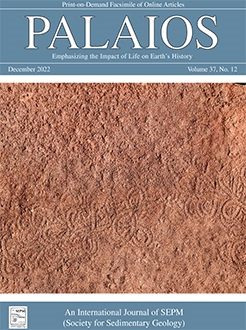Bioturbating activities have played a vital role in shaping the marine ecosystem throughout metazoan history, influencing the abundance and preservation potential of body fossil-producing taxa and driving major environmental and geochemical changes. The earliest trace making behaviors arose during the late Ediacaran Period (∼ 560–541 Ma), disrupting the substrate previously occupied by dominantly sessile organisms. Simple dwelling and grazing behaviors exploited the organic-rich matgrounds, expanding into the underutilized microbial mat ecosystem. In the western United States, trace assemblages from Ediacaran–Cambrian boundary-spanning deposits document a thriving trace-maker ecosystem. One boundary-spanning deposit in this region, the lower member of the Wood Canyon Formation, crops out along the California-Nevada boundary and contains both trace and body fossil assemblages. The Chicago Pass section of the lower Wood Canyon Formation contains a suite of dominantly simple Ediacaran traces, which become commonplace in the upper part of the stratigraphic section, documenting the onset of prevalent trace-making behaviors in this region. While traces have been previously described from this locality, the addition of the complex trace Lamonte trevallis and quantification of trace fossil density of simple Ediacaran traces provides a more comprehensive ichnological view of the Chicago Pass section. Although Chicago Pass does not yield abundant tubicolous body fossils, as are found elsewhere in the region, the low diversity ichnoassemblages document both burgeoning surficial trace making groups and mat-targeted mining in the latest Ediacaran. The behaviors present at Chicago Pass are similar to those of the Dengying Formation in South China, and highlight the need for petrographic-based trace fossil studies. Additionally, studies of Nama Group trace fossils of the same age from Namibia report higher diversity and complexity in trace-making activities than what has been observed at Chicago Pass, but with similar, low Ediacara biota body fossil diversity. If Ediacara biota diversity is anticorrelated with trace-making behaviors, Chicago Pass represents a low-complexity end-member of the same phenomenon observed in Namibia. The effect of surface sediment disruption on the sessile Ediacaran communities may have been decoupled from complexity of the traces, more so influenced by the presence of general trace-making behaviors in aggregate, including simple traces.
How to translate text using browser tools
2 January 2023
THE ROLE OF SURFICIAL BIOTURBATION IN THE LATEST EDIACARAN: A QUANTITATIVE ANALYSIS OF TRACE FOSSIL INTENSITY IN THE TERMINAL EDIACARAN–LOWER CAMBRIAN OF CALIFORNIA
Gretchen R. O'neil,
Lydia S. Tackett,
Michael B. Meyer
ACCESS THE FULL ARTICLE
It is not available for individual sale.
This article is only available to subscribers.
It is not available for individual sale.
It is not available for individual sale.

PALAIOS
Vol. 37 • No. 12
December 2022
Vol. 37 • No. 12
December 2022




